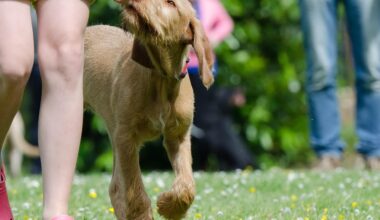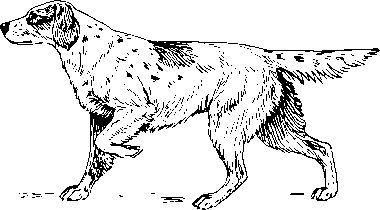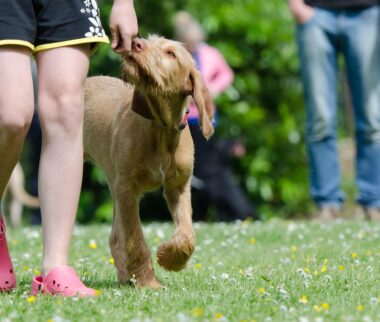Scent Training for Different Dog Breeds: What You Need to Know
Scent training is a fascinating and essential aspect of dog training that can enhance a dog’s abilities significantly. Different breeds have unique characteristics that can influence how they respond to scent training methods. Breeds like Bloodhounds and Beagles possess an extraordinary sense of smell, making them naturally excellent candidates for scent training. These breeds often require specific techniques that maximize their inherent abilities. Scent training helps capitalize on their natural instincts while fostering a positive learning experience. When implementing scent training, it is vital to consider your dog’s breed and temperament. Generally, positive reinforcement works best for all dogs, but especially for breeds that are more sensitive or easily distracted. Proper techniques can include the use of a variety of scent activities, such as tracking, scent discrimination, and search exercises. Employing these activities not only sharpens their sense of smell but also provides mental stimulation, crucial for their overall well-being. Understanding these aspects ensures successful scent training tailored to your dog’s abilities and breed characteristics.
Another vital consideration for effective scent training involves the environment. The setting plays a significant role in how well a dog will perform during training exercises. It is best to start in a controlled, distraction-free location before gradually introducing them to more complex environments. This method allows dogs to focus solely on the scent without being overwhelmed. Once they are comfortable, you can slowly add distractions to simulate real-world situations. For example, training outdoors in areas where various aromas are present can significantly enhance their focus, provided they’ve foundational skills in controlled settings. Introducing varied environments also aids in developing adaptability, an essential trait for any working dog engaged in scent-related tasks, such as tracking or search and rescue. Furthermore, rewarding successful searches with treats or praise can help reinforce positive behavior. Remember always to keep training sessions short yet engaging to maintain the dog’s interest. Maintaining a balance between challenge and capability will help ensure success, leading to a more effective training experience.
Choosing the Right Scent Training Method
Choosing the most effective scent training method is crucial for your dog’s success. Various techniques are available, and selecting the right one often depends on your dog’s breed and individual characteristics. For instance, some dogs respond better to food rewards, while others may prefer toys or praise. It’s important to gauge your dog’s preferences to find the most motivating reinforcer. The target scent is essential, too; some trainers recommend starting with familiar scents like vanilla or certain herbs before introducing more complex ones. Utilizing items your dog is already familiar with can foster confidence and enthusiasm in training. Another technique is scent discrimination, which involves teaching dogs to differentiate between various scents. Dogs can be very accurate once they master this skill, leading to success in various scent work activities. Engaging in games that challenge them to identify and find specific scents can be helpful too. Ultimately, patience and consistency are your best allies in this training journey, along with adapting methods to fit each individual dog according to their unique personality and breed requirements.
Additionally, incorporating scent games into your dog training routine can significantly enhance engagement. These games provide a fun and stimulating way to develop your dog’s scenting abilities while also strengthening your bond. Consider exercises like hide-and-seek with their favorite toy or creating scent trails with treats. Start by placing a treat or toy in an easily accessible location and gradually increase its difficulty. You can hide it in more challenging spots around your home or yard as your dog becomes more adept at finding the scent. This not only fosters their natural behavior but also keeps them physically active and mentally stimulated. Canines thrive when they have tasks to accomplish, and scent work offers a fulfilling outlet for their energy. Moreover, ensuring variety in these games can keep training fresh and exciting. When dogs sense monotony in training, their interest can wane, affecting performance. Hence, continually introduce new scents and challenges to maintain motivation. Regularly changing the environment and incorporating different types of scents can lead to a rewarding scent training experience for all involved.
Understanding Your Dog’s Limitations
Even with robust training methods, understanding your dog’s limitations is essential in scent training. Each dog has different thresholds for learning and responding to cues, often determined by their breed and personality traits. Keeping this in mind can help prevent frustration for both the trainer and the dog. For instance, herding breeds may quickly grasp scent training concepts due to their high intelligence and desire to work. Meanwhile, more independent breeds may require additional patience. Consequently, establishing clear expectations while being flexible with training strategies based on individual progress is crucial. Additionally, it’s vital to recognize signs of fatigue or boredom, which can signal that it may be time for a break or to change activities. Incorporating ambient cues and signals through consistent timing on commands can also reinforce training while providing clarity. Furthermore, competitive environments can amplify stress levels. Hence, maintaining a positive and supportive atmosphere during training sessions is vital. Building confidence and showcasing small successes can instill a sense of achievement, encouraging progression through scent training techniques.
Moreover, it’s essential to have realistic expectations during scent training, particularly when dealing with different breeds. Not every dog can excel in scent work, but all dogs benefit from the mental and physical stimulation it provides. Adapt your goals based on your dog’s inherent abilities, ensuring the training remains enjoyable for them. Each new scent they learn is a step toward greater skills. Celebrating small victories, like correctly identifying a new scent, can go a long way in maintaining your dog’s enthusiasm and encouraging further learning. Also, consider your dog’s age and health when structuring training sessions. Older dogs may not perform as well as younger ones, so adjust the duration and intensity of sessions accordingly. Consistent practice over time will yield better results than trying to rush through extensive training sessions. Celebrate progress, regardless of how minor it might seem. The journey is as important as the destination. By ensuring every experience is positive, you’ll reinforce their dedication and work ethic as they grow and develop their scent training skills.
Building a Supportive Community
Finally, connecting with a community of dog training enthusiasts can significantly enhance your scent training experience. Participating in clubs or online forums allows for knowledge sharing, resource exchange, and encouragement. Likewise, attending workshops can provide insight into different training techniques and approaches specific to various breeds. Engaging with others can foster fresh ideas and spark new training techniques that could better suit your dog’s learning style. Moreover, when encountering challenges in your training journey, reaching out to fellow trainers can provide supportive perspectives on solutions or coping strategies. Through community engagement, one might discover new tools, methodologies, or strategies that have proven successful for others. Staying informed about advancements in dog training can also guide your journey. With an evolution in understanding canine behavior, new findings can significantly alter how we approach scent training. Therefore, embracing continuous learning within a community setting can be highly advantageous for both you and your dog. Remember, fostering a supportive environment not only enhances learning but makes the experience more enjoyable for everyone involved.
In conclusion, scent training offers an enriching experience for dogs, particularly when tailored to their unique needs and characteristics. Understanding your dog’s breed-specific traits, environment, and limitations can help ensure successful outcomes. Utilizing various methods while remaining adaptable is crucial for fostering an engaging training atmosphere. Moreover, making learning fun through scent games, community engagement, and realistic expectations enriches the training experience. Therefore, invest time and effort, and always consider your dog’s interests during training sessions. Patience, consistency, and positive reinforcement are essential components in creating a successful scent training program. Over time, as your dog develops their skills and gains confidence, you’ll witness remarkable transformations in their abilities. Moreover, these experiences create a stronger bond between you and your dog as you work together toward a common goal. Remember to celebrate every little success, ensuring that the journey remains enjoyable. Ultimately, the more you invest in your dog’s training, the greater the rewards will be for both of you, making it a fulfilling experience packed with joy and accomplishment.





